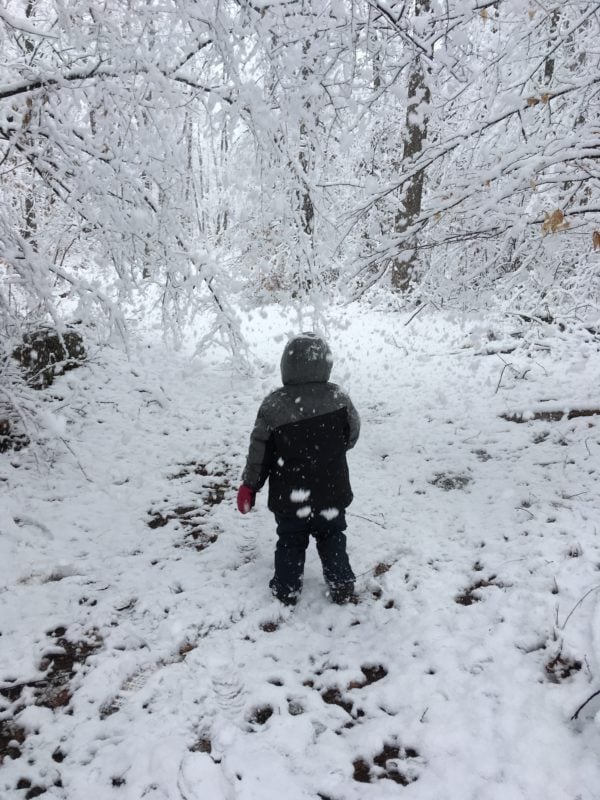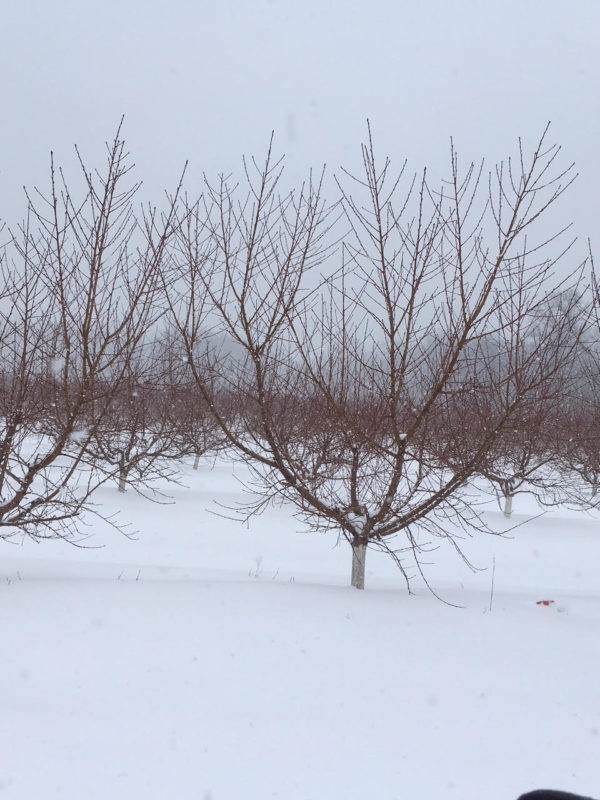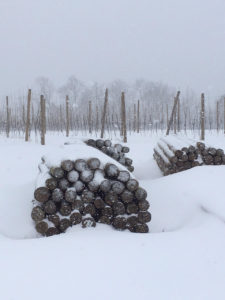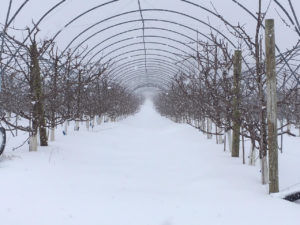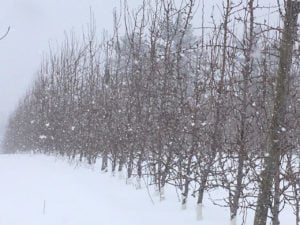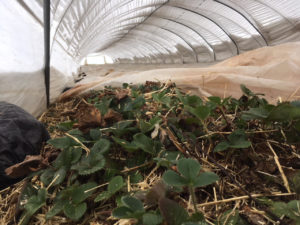Tuesday, March 20, was the first day of spring, and our community found itself bracing for an epic snowfall continuing into Wednesday.
While friends may gripe about the cold and the snow, it brings a feeling of relief to my husband and me. While I love warm weather, I have learned that without the cold, ice and snow, the health of our trees suffers. (There is a reason Apples, Peaches and Apricots are not grown in the Amazon Jungle). Too warm of a winter or spring can mean lost crops and no fruit. (Last year we lost our plum and apricot crops because it was excessively warm for several days in February and the trees started blooming; the buds were then killed when the weather righted itself to seasonal temperatures within a few weeks.)
After several years of frantic springs spent trying to rescue our trees from sabotaging warm weather, this cold spring is very welcome!
We celebrate snow in March, and even on the first day of spring. Even if it means shoveling off our High Tunnels during the night, my husband almost turns jubilant at these types of forecasts. He gets asked all the time if snow is going to damage the trees and this is his response, “It’s almost never the case that snow hurts trees, mainly because we prune the trees to carry the weight of the fruit– so if they can sustain a branch full of fruit they will sustain the weight of snow. The one exception is if we would get over 3 feet of snow that melts slowly forming an icy layer, that would cause an increased weight and an increase in the potential for breakage. We worry about ice more than snow.”
Cold weather benefits fruit trees by keeping diseases and pests at healthy levels. Cold weather in early spring prevents the buds from opening too much and becoming more fragile and susceptible to the frequent cold snaps that follow early warm ups. Cold, frozen ground allows our workers to get equipment to the trees to finish pruning. Large amounts of snowfall help to replenish the ground water and help us avoid excessive drought during the summer months (less energy is then spent on irrigation). Snow on the ground maintains a colder soil temperature, which causes trees to bud more slowly and delays bloom time (something you want to delay in early spring until the chance of frost is over).
Just as the trees need a season of cold, they also rely on the weather warming up in the proper timing. (There is a reason fruit is not produced in Antarctica.) Without sun and warmth the flowers will fail to pollinate effectively. Too much cold and clouds during bloom can slow down the bees and too much rain or moisture during bloom can cause rotting flowers and failed pollination.
When I stop to ponder the fragility of our trees, I realize that the fact that we have any fruit at all is always a miracle. Our Divine Creator grants our trees the ability and the proper conditions to bear fruit. His grace enables us to reap a harvest. Each season has a purpose and the proper order of seasons ensures life and growth in our trees as well as our souls. So today we find ourselves grateful at the proper order of things and celebrate the gift of snow.

